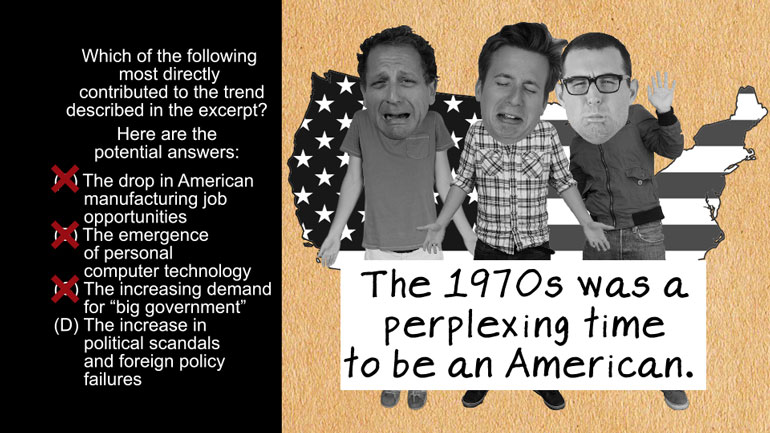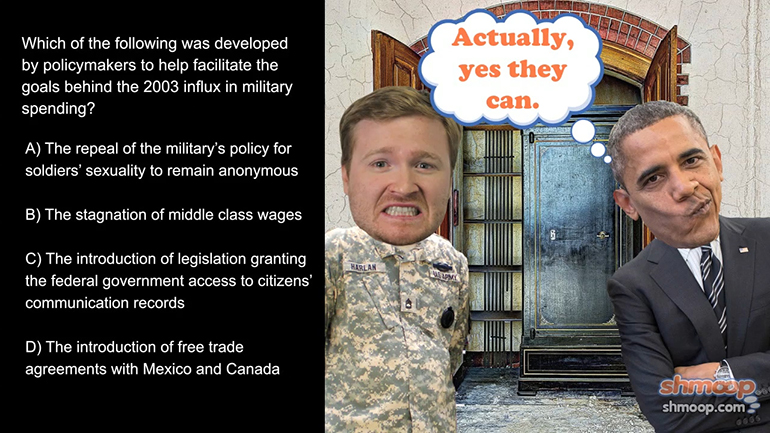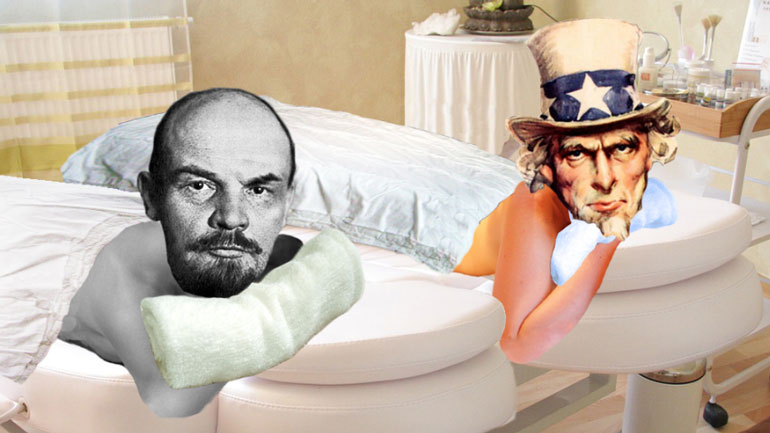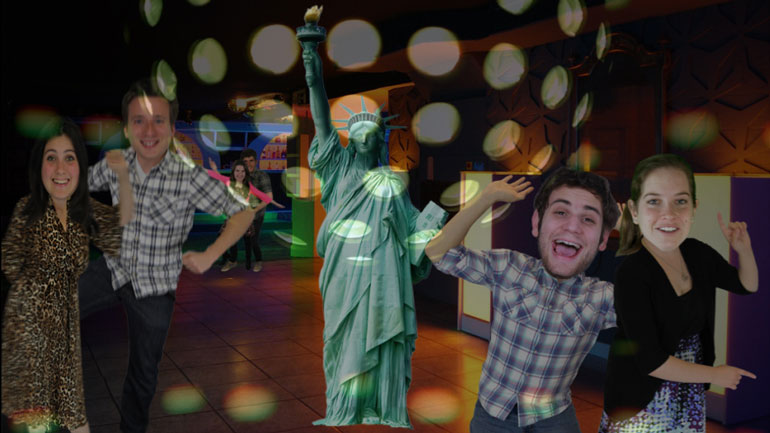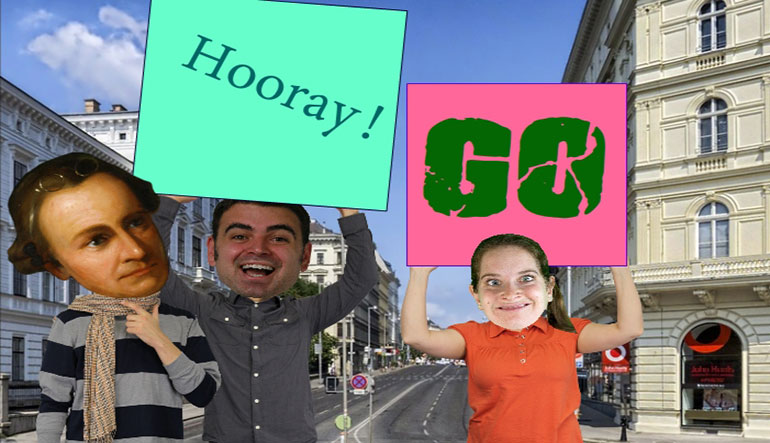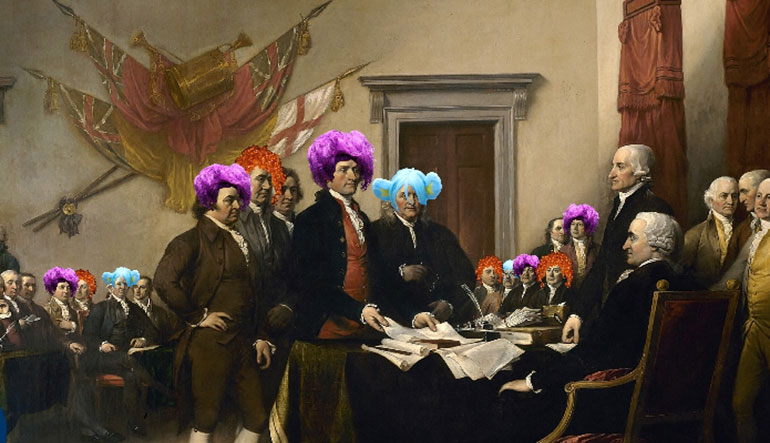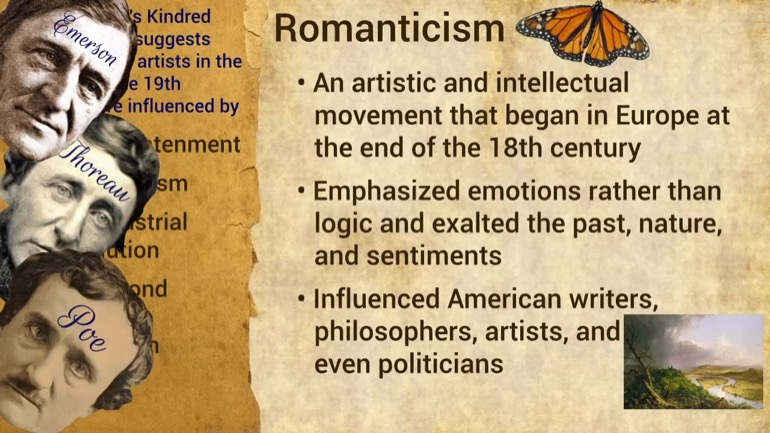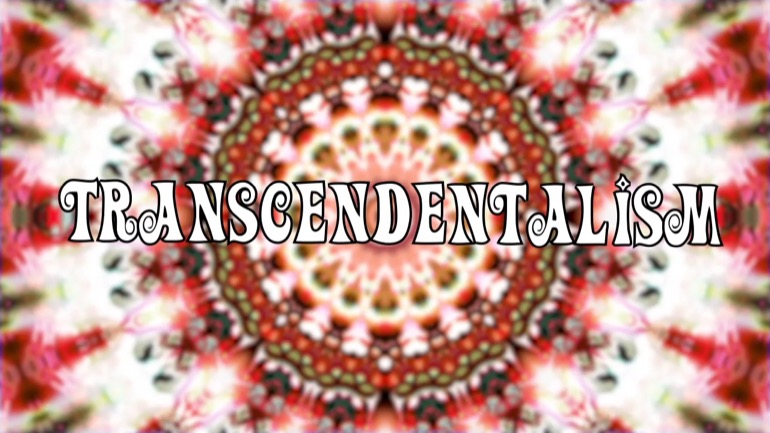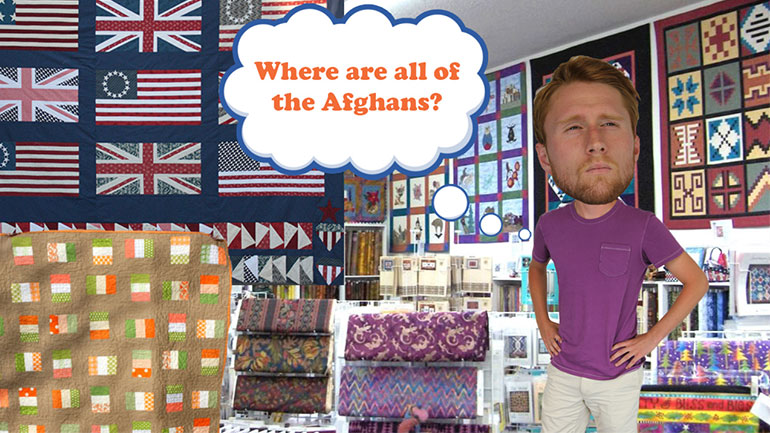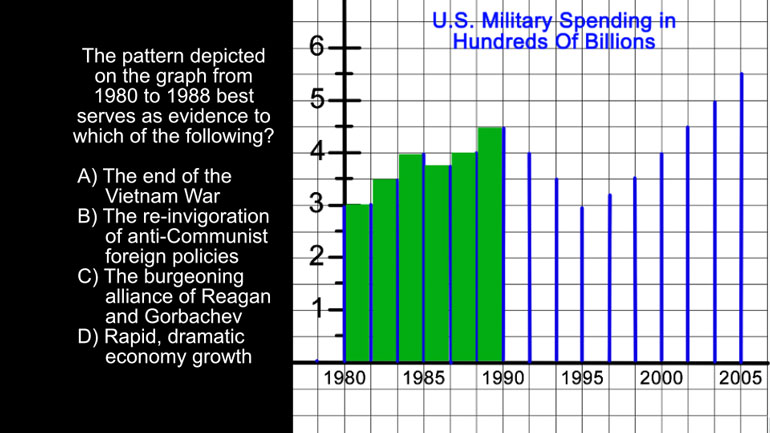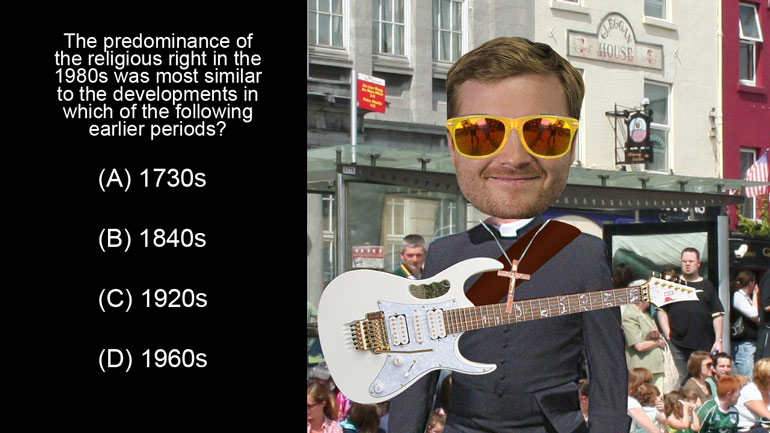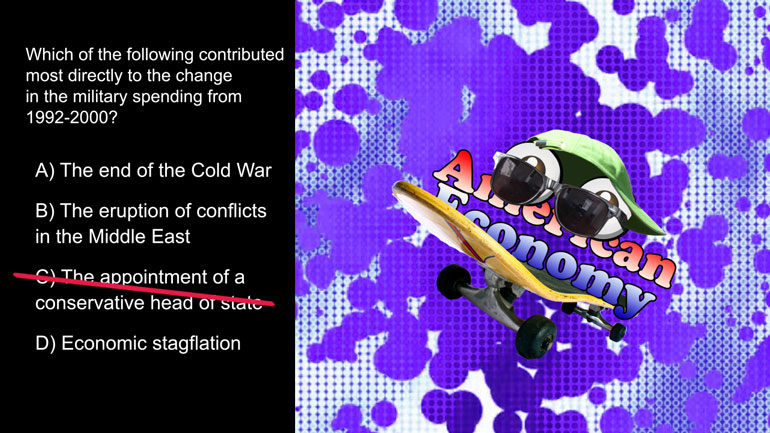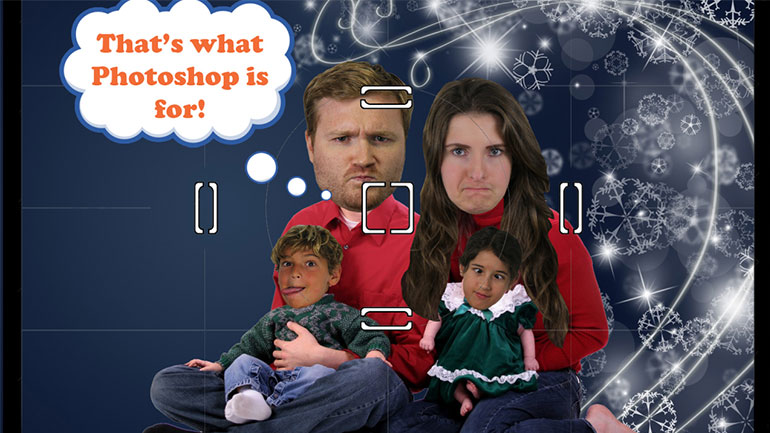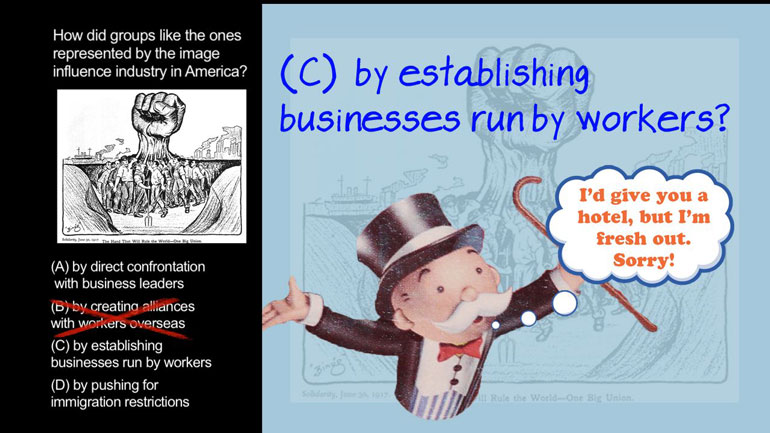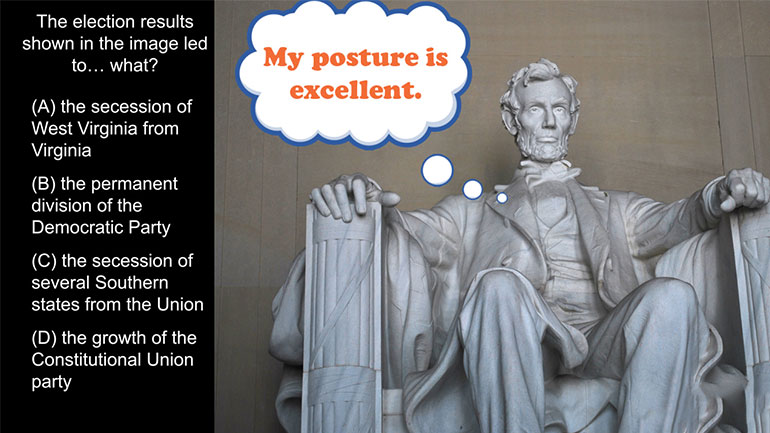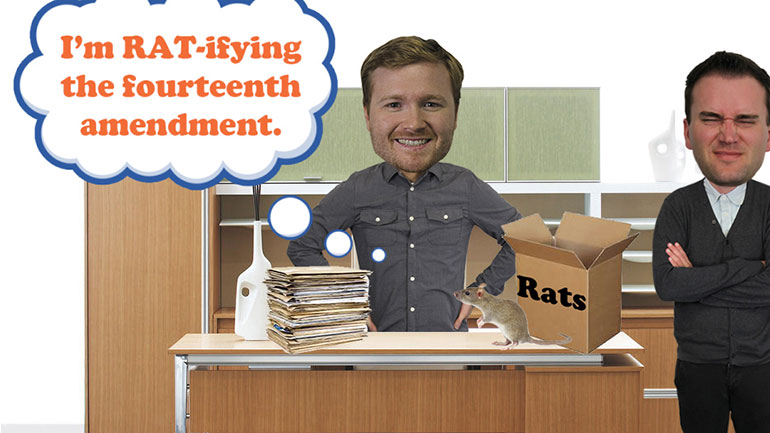ShmoopTube
Where Monty Python meets your 10th grade teacher.
Search Thousands of Shmoop Videos
Period 9: 1980-Present Videos 17 videos
AP U.S. History 3.2 Period 9: 1980-Present. Which choice most directly contributed to the trend in the excerpt?
AP U.S. History 3.5 Period 9: 1980-Present. Which of the following was developed by policymakers to help facilitate the goals behind the 2003 influ...
AP U.S. History 1.1 Period 9: 1980-Present. The success of the Republican Party's fiscal policies in the 1980s and 1990s was accompanied by...what?
AP U.S. History 1.3 Period 9: 1980-Present 232 Views
Share It!
Description:
AP U.S. History 1.3 Period 9: 1980-Present. Reagan's statement reflects what shift in American relations with regards to the Soviet Union?
Transcript
- 00:00
[ musical flourish ]
- 00:03
And here's your Shmoop du jour, brought to you by disarmament,
- 00:06
Doctor Frankenstein's favorite pasttime.
- 00:09
Yeah, he disarmed... Get it? Or not.
- 00:11
All right, check out this excerpt.
Full Transcript
- 00:13
[ in a whisper ] Well, since the days of my administration...
- 00:16
[ mumbles ]
- 00:22
All right, yeah, that's my Ronald Reagan. It's not very good, I know.
- 00:24
All right. Reagan's statement reflects what shift in American relations
- 00:28
with regards to the Soviet Union?
- 00:30
It was called the Soviet Union back then. They were evil.
- 00:32
And here are your potential answers.
- 00:34
[ mumbles ]
- 00:39
All right. What can we take from Reagan's statement?
- 00:42
We see that he's been "working on an approach to the crucial issue
- 00:45
of strategic arms and the control of negotiations for control
- 00:49
of those arms with the Soviet Union."
- 00:51
Ugh. It's a mouthful.
- 00:53
So basically, there were a whole bunch of nuclear bombs
- 00:55
in the U.S. and the U.S.S.R. that were pointed at each other.
- 00:58
And Reagan was gonna try and, well, defuse the situation. Yeah, that's a good thing.
- 01:03
All right, well let's see which answer best explains Reagan's master plan.
- 01:06
Does Reagan's statement reflect A -
- 01:09
the continuation of hostile diplomatic relations?
- 01:12
Well, actually, Reagan went out of his way to help
- 01:14
thaw relations between the two countries.
- 01:16
They didn't make it all the way to a full alliance, but the Cold War
- 01:19
certainly became a little less... cold.
- 01:21
That freezes out A and C.
- 01:23
Could Reagan's statement have reflected B -
- 01:25
the detente of relations but stockpiling of weapons?
- 01:29
Well, ever hear of the S.T.A.R.T. Treaty? S-T-A-R-T, that thing?
- 01:33
It was the successful proposal by Reagan to
- 01:36
de-escalate the arms race,
- 01:38
which led to a decline in the number of weapons on each side.
- 01:41
That really helped everyone cool their jets.
- 01:43
And nuclear warheads.
- 01:45
Which means that Reagan's statement reflected D -
- 01:47
the softening of relations and gradual disarmament.
- 01:51
Ding ding ding. This speech marked the gradual relaxation of relations
- 01:55
between the U.S. and the Soviet Union,
- 01:57
as well as putting into motion agreements that would eliminate 80 percent
- 02:01
of all strategic nuclear weapons.
- 02:03
So D is the right answer. Michael Gorbachev's resignation would
- 02:07
finally bring the Cold War to a close.
- 02:10
If you can't stand the heat,
- 02:11
get out of the potentially civilization-ending nuclear fire.
- 02:15
Yeah. That's our motto, too.
- 02:18
[ wow ]
Related Videos
AP U.S. History Diagnostic 1. Relationships like the one shown in the image resulted in the development of...what?
AP U.S. History Diagnostic 15. How did groups like the ones represented by the image influence industry in America?
AP U.S. History Diagnostic 10. What led to the splintering of the political parties shown in the image?
AP U.S. History Diagnostic 11. The election results shown in the image led to...what?
AP U.S. History Diagnostic 12. How did the Reconstruction Acts open up political opportunities for former slaves?
